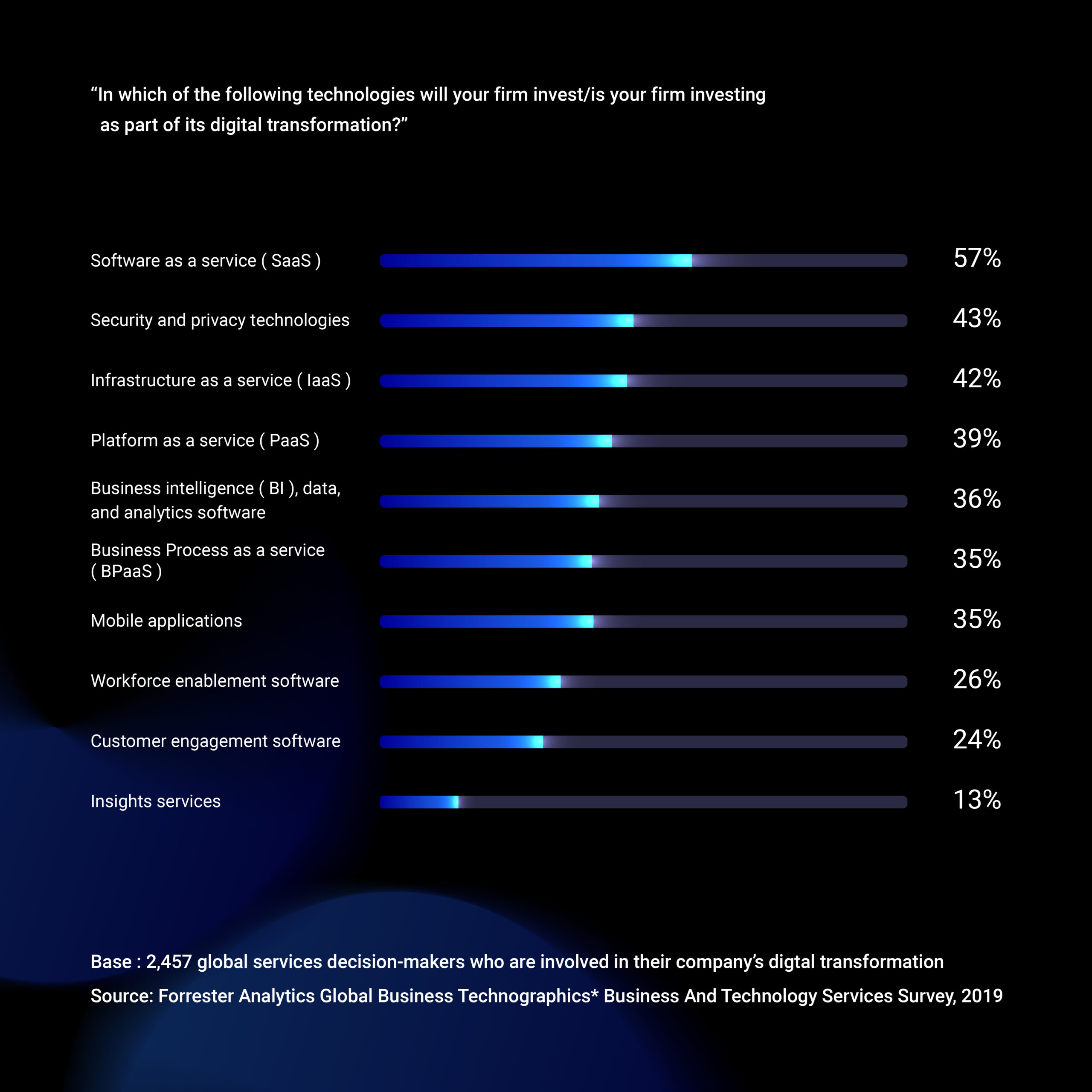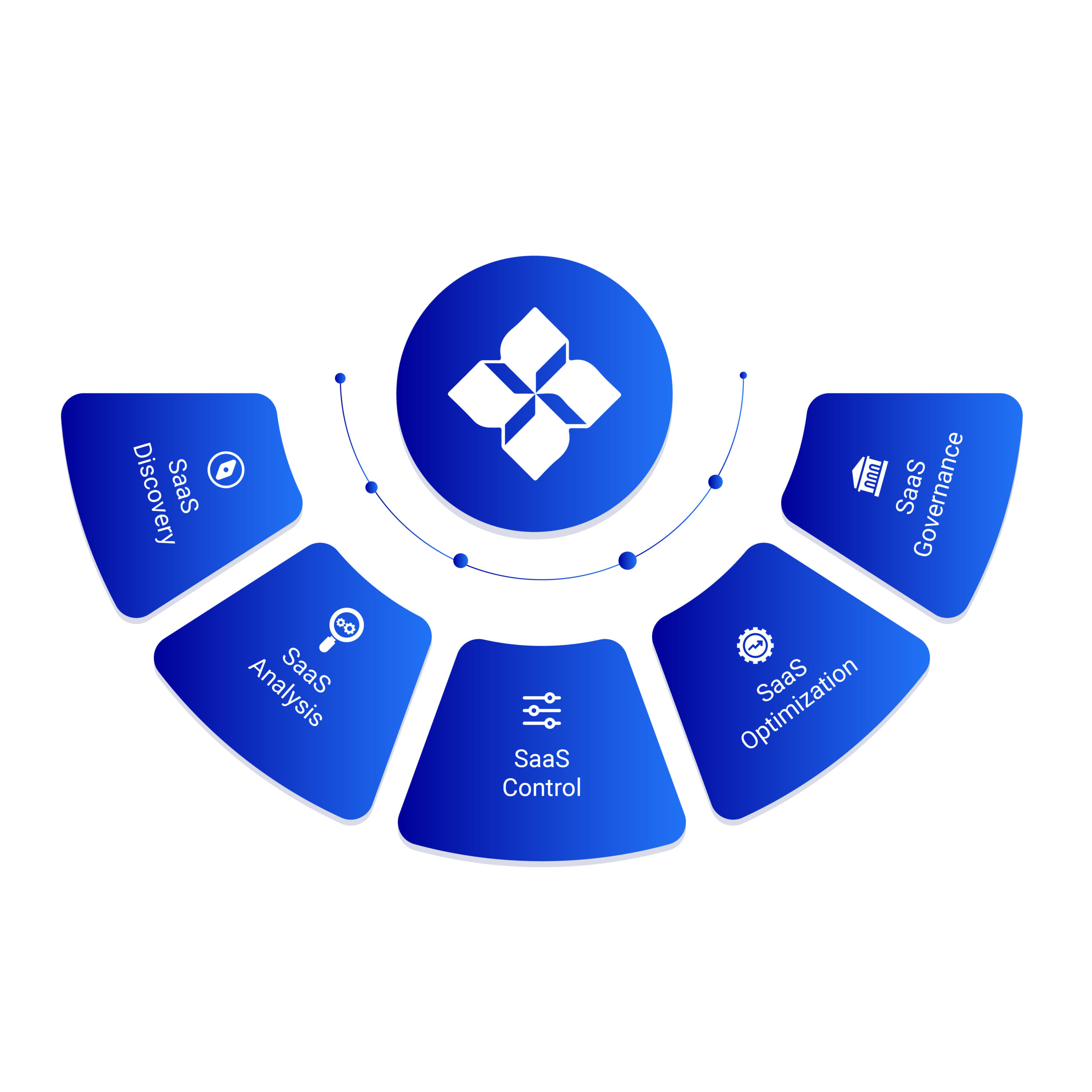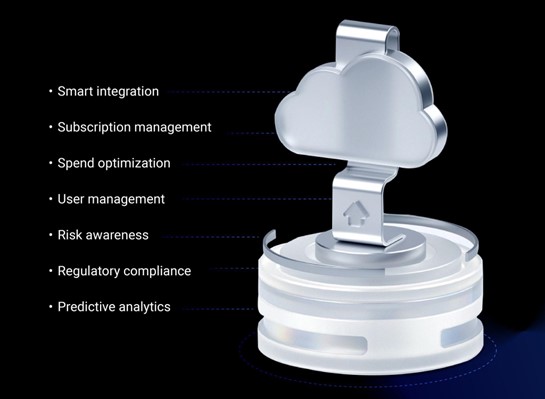Insights

The SaaS economy: Reduce costs and maximize your cloud investments
Future of digital business
The SaaS (software-as-a-service) industry is continuously reaching new heights as a crucial contributor to digital transformation strategies. With the growth of the cloud economy, there has been a shift in how businesses offer their core services, placing greater emphasis on SaaS and subscription-based models.
According to Verified Market Research (VMR), the SaaS Management Platform market was valued at $113.82 billion in 2020 and is projected to reach $716.52 billion by 2028, growing at a CAGR of 27.5% from 2021 to 2028. The rapid growth of SaaS management platforms and the overall market size now require organizations to identify solutions that can help reduce unnecessary or wasteful SaaS spending.
The SaaS industry has gained customer confidence with its cloud-based data security and system availability. Additionally, the revenue generated by cloud services has captured the attention of investors leading to the emergence of a new SaaS economy. Within this ecosystem, businesses are developing new applications, and building business-specific applications by leveraging the best available SaaS applications. However, the payment models of SaaS applications can be a challenge to adopt. Unlike proprietary software models, SaaS platforms rely on recurring monthly or yearly payments, which may fluctuate based on the number of users accessing the platform.
Balancing the cost of operations while maintaining a healthy ROI can be challenging. However, according to a study by Forrester,[i] companies plan to invest heavily in SaaS. So how can a company strike the right balance between profitability and reducing the operational cost of SaaS to maximize cloud investments?

SaaS operations: Opportunities and challenges
Managing and operating cloud assets is significantly different from traditional on-premises operations and requires a deep understanding of how to do it effectively, as well as the ability to troubleshoot any issues that arise.
The rise of remote working models and ease of SaaS adoption can lead to SaaS sprawl within an organization. Therefore, it is crucial for businesses to make strategic SaaS decisions as a part of the core digital business transformation in order to stay competitive in the current scenario. Organizations often use multiple solutions based on their varying needs across departments or operations. However, these SaaS solutions often share features that can be leveraged for other processes without the need to purchase an entire solution. The use of shadow IT and unsanctioned applications for these purposes may add extra burden to operational expenses.
Having visibility and control over the authorization of SaaS applications can help organizations apply the right security policies and controls. The uncontrolled growth of SaaS solutions in an organization can create significant issues with the governance of the ecosystem. With a massive amount of data to manage across parties, managing assets or assigning a super admin responsible for user access and control becomes challenging.
Elements of SaaS operations and management lifecycle
Effective SaaS operations depend on a series of critical factors, including:
- SaaS discovery: Identifying all the SaaS applications that are currently in use in the organization, regardless of whether they were procured through IT or by individual departments.
- SaaS analysis: Analyzing the usage and cost of each SaaS application to determine their value to the organization, as well as identifying any risks or security concerns associated with the use of these applications.
- SaaS control: Implementing policies and procedures to manage the use of SaaS applications in the organization, including controls to manage user access, data security, and compliance with regulations.
- SaaS optimization: Optimizing the use of SaaS applications to reduce costs, increase efficiency, and improve performance, such as through rightsizing licenses or consolidating vendors.
- SaaS governance: Establishing guidelines, policies, and procedures to manage the use of SaaS applications in the organization, including compliance with regulatory requirements, and monitoring and enforcing adherence to these guidelines.

Cloud operating methodology is a high-level representation of the systematic management of cloud/SaaS applications across the organization. It provides companies with the blueprint to effectively organize the capabilities that deliver user value through the systematic application of SaaS/cloud services.
However, there are often challenges when many SaaS services are used within an organization. It can be difficult for the company to have visibility into the SaaS spending and to understand the areas of applications or operational dependencies of multiple teams on them. Additionally, the use of multiple SaaS services can increase the number of touchpoints or user accessibility, which can reduce the security of the environment. As a result, it may increase compliance spending and make reputation management of the organization more challenging.
Considering all these factors, having a robust framework that optimizes the operational challenges of an organization around a cloud-based SaaS ecosystem can be beneficial. As the company moves towards analyzing the discovery and utilization of SaaS, it can help them to identify a roadmap for its adoption. The journey, in this case, typically is as follows:
- Discovery: Identify the cloud/SaaS applications and build a catalog by department and function.
- Analyze: Analyze the applications based on usage, integration points, security, and compliance.
- Automate: Automate all the integration points and SaaS testing.
- Control: Get SaaS insight, secure SaaS operations, and manage user access.
- Optimize: Optimize SaaS users, access, license, and subscription costs.

Once the operational requirements and lifecycle management are established, the question becomes how to leverage them to drive business transformation and optimize the SaaS ROI. An intelligent SaaS management platform can be a valuable tool in this effort. Let’s explore how it works.
CloudNuro.AI: Intelligent SaaS management platform
CloudNuro.AI SaaS management platform helps prevent SaaS sprawl and brings observability and actionable insights into SaaS applications. Given the current economic scenario, having a strategic partner like CloudNuro.AI can help organizations reduce SaaS expenditures. Businesses are aggressively looking to optimize their SaaS spending while gaining visibility and maximizing their SaaS usage. A SaaS management platform can help organizations to:
- Increase visibility into SaaS usage.
- Improve manageability and automate repetitive SaaS administration tasks.
- Improve consistency of security identities and data across SaaS applications.
- Optimize SaaS license entitlements based on consumption.
- Drive adoption of SaaS apps and measure the performance of apps and integrated components.
- Drive continuous improvement through insights and automation.

Maximize your cloud investments
Organizations that lack standardized governance for multiple SaaS applications may experience negative impacts on SaaS growth. By understanding the usage patterns of SaaS tools, organizations can optimize their ROI.
Establishing discipline in SaaS usage and management can help companies to buy only what they need and pay only for what they use, minimizing recurring and wasteful expenditures on SaaS tools. This approach can also add value to business operations by enhancing the security and compliance of the ecosystem. If you are seeking to address the challenge of managing your SaaS budget, please contact us to learn how together, Beyondsoft and CloudNuro.AI can help your company maximize your cloud investments.
[i] Forrester, “Best Practices for Software-as-a-Service Operations” (2020), https://www.forrester.com/report/Best-Practices-For-SoftwareAsAService-Operations/RES154097.

How we do it
Our success factors over the years are a testament to driving your return on investment. Singapore is our global head office and we have 15 regional offices around the world.

Three decades of strong IT consulting and services

Global presence across four continents

Certifications* in CMMI 5, ISO 9001, ISO 45001, and ISO 27001

>30,000 global experts

Microsoft Azure Expert MSP
ISO 9001 and 45001 (certificates issued to Beyondsoft International (Singapore) Pte Ltd). ISO 27001 (certificates issued to Beyondsoft International (Singapore) Pte Ltd, Beyondsoft (Malaysia) Sdn. Bhd., and Beyondsoft Consulting Inc., Bellevue, WA, USA)
